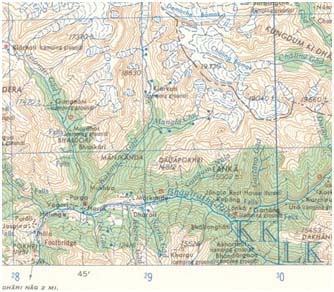Mountain areas and communities are susceptible to climate change. This work also yielded evidence of the coping strategies developed by the communities to deal with an unprecedented and only partially understood threat. This paper describes these strategies and attempts to assess the vulnerability of the communities in each valley.
The study states that the uncertainty in the weather is a strong argument for focusing on increasing the resilience of the communities and ecosystems to enable them to adapt to unpredictable change. The major concerns of the communities are their dependence on monoculture and on winter rainfall. Strategies to decrease their reliance on these factors will increase their resilience to climate change impact.
The villages in the Bhagirathi valley form communities with strong social capital in the form of social ties, respect, and lack of marginalization. This has led them to formulate strategies that might help them continue their way of life. On the other hand, the marginalized communities in the Pindar valley have adopted out-migration and dependence on external support as their coping mechanism. This will eventually cause them to abandon their current lifestyles. Given the increase in the number of deserted villages in Uttarakhand, this seems to be a mechanism adopted by several communities.

Bhagirathi Valley, Uttarakhand
Villagers in both valleys are attempting to reduce this dependence on a single crop by a variety of means which range from growing vegetables to increasing dependence on remittances. These methods have repercussions that impact the cultural dynamic of these communities by strengthening linkages with the national network.
These linkages add to the variety of options available to the communities and drastically increase their chances of survival. The external observer is however, faced with the paradox of Theseus’ ship. If every plank of the ship was replaced over the years, is it still the original ship? The elements that define mountain communities today- their reliance on high-altitude crops, self-sufficiency, use of natural resources- are changing, and necessarily so.
With the changes in weather patterns, communities need to adopt a wide range of crops to survive. With increasing unpredictability, communities need to diversify their support networks and livelihood options to guard against disasters. Both these strategies lead to an adoption of urban materials and influences. With these changes, can mountain agrarian communities be said to survive, or to become extinct? The report addresses some of these questions.
Download the full report here -
/articles/changing-seasons-how-himalayan-communities-cope-climate-change-report-peoples-science